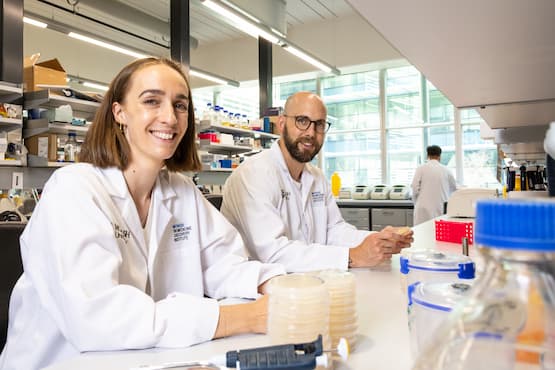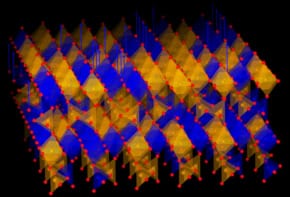
An enzyme that catalytically converts the hydrogen present in air into energy could find use in applications such as cheap and efficient hydrogen fuel cells. The enzyme, extracted from a bacterium by researchers at Monash University in Australia, is also insensitive to oxygen, unlike all other hydrogen-oxidizing catalysts, including platinum.
“The hydrogenase enzyme, called Huc, has such a high affinity for hydrogen that it is able to oxidize atmospheric concentrations of hydrogen,” explains study team leader Chris Greening. “This is in contrast to all known hydrogen-oxidizing catalysts that are not able to consume ambient levels of hydrogen.”
The Monash team’s studies on Huc date back to Greening’s PhD roughly nine years ago. He and his colleagues were looking into how Mycobacterium smegmatis is able to survive for years on end without having access to any organic food sources. This work led to a surprising discovery, recalls Greening: that the bacterium actually lives on air. “It takes up atmospheric hydrogen and uses this for aerobic respiration.”
A ubiquitous energy source
Given that atmospheric hydrogen is a ubiquitous, diffusible and potent energy source, it provides a dependable lifeline for the survival of many bacteria, especially in nutrient-poor environments such as Antarctic soils, volcanic craters and the deep ocean. Until now, however, the researchers did not know how the bacteria exploit the trace amounts of hydrogen in the air.
In the new work, Greening and colleagues extracted Huc from M. smegmatis. By using advanced microscopy techniques like cryo-electron microscopy to determine its atomic structure and electric pathways, as well as employing electrochemistry, they showed that Huc turns minute concentrations of H2 gas into electrical current with extraordinary efficiency while being insensitive to oxygen (which usually acts as a “poison” for hydrogen-oxidizing catalysts). It does this by coupling oxidation of atmospheric H2 to the hydrogenation of the respiratory electron carrier menaquinone, using narrow hydrophobic gas channels to selectively bind the H2 at the expense of O2.
Huc is also robust to heat and can be heated to 80°C while retaining its ability to generate energy. This allows it to survive in the most extreme conditions. What‘s more, the bacteria that produce enzymes like Huc are common, meaning that researchers have ready access to a sustainable source of the enzyme.

Improving electron transfer in enzymatic fuel cells
“At the fundamental level, we have discovered the mechanism by which bacteria ‘live on air’,” Greening tells Physics World. “This process is extremely important because it regulates the levels of hydrogen in our atmosphere and also helps to sustain productivity and diversity in soils, oceans, and even some extreme environments, like Antarctica.”
According to the researchers, who detail their study in Nature, there is much potential for this enzyme to be used as the basis for hydrogen fuel cells. And given that the enzyme literally harvests energy from air, there may also be some applications in air-powered devices, they say.
The team is now busy scaling up production of Huc from milligram quantities to much higher. “This will allow us to gain an even deeper understanding of how it works and also develop its industrial applications,” says Greening.



